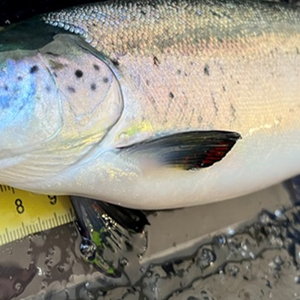FEEDAP Panel recommends revised maximum vitamin A contents for feed for most food-producing animals
European Food Safety Authority Panel on additives and products or substances used in animal feed (FEEDAP) Opinion: Consequences for the consumer of the use of vitamin A in animal nutrition
Summary
The fat soluble vitamin A is required in humans and animals. It is essential for vision, growth differentiation and proliferation of a wide range of epithelial tissues, bone growth, reproduction and embryonic development. Vitamin A is present in the diet as preformed vitamin A (retinol and its esters) and can also be derived in humans and most animal species from dietary carotenoids, mainly ß-carotene. Vitamin A accumulates in the body, particularly in liver, and is toxic at high doses in most species studied. The use of vitamin A as a feed additive is currently authorised under Regulation (EC) No 1831/2003 as nutritional additive with maximum contents for a number of animal categories and types of feedingstuffs.
Two reports, one from the UK’s Scientific Advisory Committee on Nutrition (SACN) and the other from the Agence Française de Sécurité Sanitaire des Aliments (AFSSA), both published in 2005, drew attention to the risks of high levels of vitamin A for the consumer resulting from the intake of products of animal origin.
The Commission asked the European Food Safety Authority (EFSA) to review those reports. Should the overall intake exceed the tolerable upper intake level (UL) for vitamin A, EFSA should comment on the benefit of decreasing the maximum permitted levels of addition for vitamin A. In addition, EFSA should also advise on the potential zootechnical implications of lowering the levels of vitamin A intake by food-producing animals. In that respect, consequences for the safety of target animals and the environmental impact should be assessed.
The UL set by SCF (3 000 µg RE from preformed vitamin A day-1) was considered by the Panel on Additives and Products or Substances used in Animal Feed (FEEDAP) as still being appropriate, taking into account the available data. Quantitative correlations between retinol intake and bone health risk justifying the establishment of a lower UL for a specific population subgroup (elderly people) could not be established. A maximum intake of 1 500 µg RE day-1 would therefore — until new data indicates the necessity of a re-evaluation — serve as a guidance level (GL) for persons at a greater risk of osteoporosis and bone fracture (particularly postmenopausal women).
The FEEDAP Panel considered four national studies on the intake of vitamin A in adults (three countries) and one in children. The Panel also made a separate calculation on the vitamin A intake of adults based on the food consumption survey within the EPIC project (27 study centres, ten European countries, consumption of relevant food groups, published in 2002).
Only preformed vitamin A is to be considered of safety concern. This is only found in foods of animal origin. Whereas in the period from 1970 to 1990 an increase in liver preformed vitamin A could be observed (mainly for pigs and cattle), a reverse trend seemed to start in the early nineties. Current typical values are 50–150 µg RE g-1 liver, with upper values of up to 500 µg, 4–14 µg RE g-1 milk fat, 4–9 µg RE g-1 egg yolk. Other food sources (meat, kidney and fish flesh) do not contain significant amounts of preformed vitamin A. Losses of vitamin A during food processing are known but difficult to quantify for refinement of vitamin A intake estimations, and could therefore not be taken into account.
Approximately, about half of the intake of total vitamin A in European consumers comes from carotenoids in foodstuffs of plant origin, the other half from preformed vitamin A in foodstuffs of animal origin. The mean intake of preformed vitamin A in the adult population in Europe is estimated between 400 and 1 200 µg RE day-1 in men and between 350 and 1 000 µg RE day-1 in women. A small proportion of the European population shows an intake of preformed vitamin A above the UL. This proportion is about 1–2 % in Denmark, Germany, the Netherlands, Norway, Sweden and the UK, and about 3–6 % in France, Greece, Italy and Spain. The corresponding GL is exceeded by 2–3 and 8–14 %, respectively.
The main exposure to preformed vitamin A comes from consumption of liver (with about 60–80 % in some Member States) and milk, including all dairy products (with about 45–60 % in others). Despite the uncertainties associated with the assessment of preformed vitamin A intake from liver, it can be concluded that among liver eaters, the consumption of liver as such may lead to daily intakes of 2 800–7 000 µg preformed vitamin A. It is considered highly unlikely that consumers would exceed the UL from the intake of milk and dairy products alone.
It can be concluded that the risk of exceeding the UL (and GL) for preformed vitamin A is predominantly related to liver consumption, but also from the consumption of supplements containing vitamin A.
Preformed vitamin A may raise safety concerns because of its high levels in some foods of animal origin and of individual consumption patterns; therefore, feeding practice should seek to avoid any unnecessary high concentration in those foods.
The following potential maximum contents of vitamin A in feed have been derived for pigs: 16 000 IU vitamin A kg-1 for piglets, 6 500 IU vitamin A kg-1 for pigs for fattening, 12 000 IU vitamin A for gestating sows and 7 000 IU vitamin A kg-1 for lactating sows; for cattle: 25 000 IU vitamin A kg-1 for veal calves, 10 000 IU vitamin A kg-1 for cattle for fattening and lactating cows, and 20 000 IU vitamin A kg-1 for dry cows; and for poultry: 20 000 IU vitamin A kg-1 in the first 14 days of life for chickens reared for laying and for fattening and in the first 28 days of life for turkeys for fattening, 10 000 IU vitamin A kg-1 for chickens reared for laying and for fattening (after 14 days), for turkeys for fattening (after 28 days), and for laying hens and breeder turkeys. For fish and minor species (other poultry, other ruminants, rabbits and horses), there are insufficient data available to derive maximum contents with the necessary accuracy.
The derived maximum concentrations in feed for food-producing animals will probably not reduce the typical preformed vitamin A concentrations in tissues and products but result in more uniform contents, thus avoiding extreme high values.
The FEEDAP Panel recommends as a measure for the protection of consumers the introduction of revised maximum vitamin A contents for feed for most food-producing animals. The Panel further recommends (i) the limitation of vitamin A in the daily ration by regulating complementary feedingstuffs, (ii) the monitoring of preformed vitamin A in foods of concern after introduction of revised maximum contents and (iii) the extension of advice to consumers to avoid excessive intake of preformed vitamin A.
Download full Opinion (PDF - 0.8Mb)










